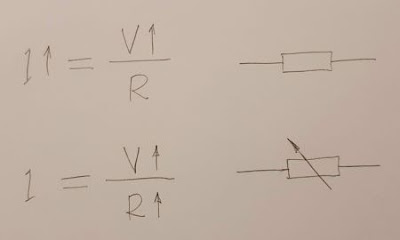How does a transistor maintain a constant current?
In contrast to diodes that maintain a relatively constant voltage when the current through them varies, a fundamental property of all types of transistors (BJT, FET...) is to maintain a relatively constant current when the voltage across them varies. How do they do that?
As in the case of diodes, this question can be answered specifically by considering the processes in the semiconductor device. But again it would be interesting to explain this on a conceptual level by revealing the basic idea. As I have already said, this "philosophical" approach has several advantages: first, it does not require in-depth knowledge of semiconductor devices; second, it would be applicable to all 2-terminal devices that have this property. I will do this using the concept of "dynamic resistance".
Generally speaking, a transistor behaves like a resistor that interferes with current creating a voltage drop and heat loss. In the initial steep part of its output IV curve, this "resistor" has a relatively constant low resistance. And if it was really a resistor, the curve would continue in the same direction.
However, when the current threshold of the respective transistor is reached (set by the base-emitter voltage or current), the curve abruptly changes its slope and becomes almost horizontal. The voltage continues to change but the current stops changing. Why? Here is my simple explanation…
When the voltage V increases, the diode also increases its static resistance R with the same rate of change. So, the current through the transistor I = V/R does not change.
This is a simple arithmetic trick where we change the numerator and denominator of a fraction in the same direction and with the same rate of change; as a result, the quotient of the division does not change.
Thus, by changing its resistance in the same direction with the current, this "dynamic resistor" maintains a constant current. This clever "transistor trick" can be graphically illustrated:
Tomorrow I have an online exercise on Semiconductor Devices with my students of group 48b, ITI, FCST of Technical University of Sofia, that is about transistor applications. Maybe I will illustrate to them this viewpoint by means of ZOOM pen drawing moving IV curves.
And again, to get the attention of my students, I would tell them another fun story - that I could mimic any transistor they wanted with just a variable resistor ("potentiometer")... and that if I hid in a big box, they would think that there is a transistor inside:-)
The next day... Done! Here is a part of the video record (in Bulgarian) and a screenshot:
It would be interesting for me to know your opinion on my explanation.



Comments
Post a Comment